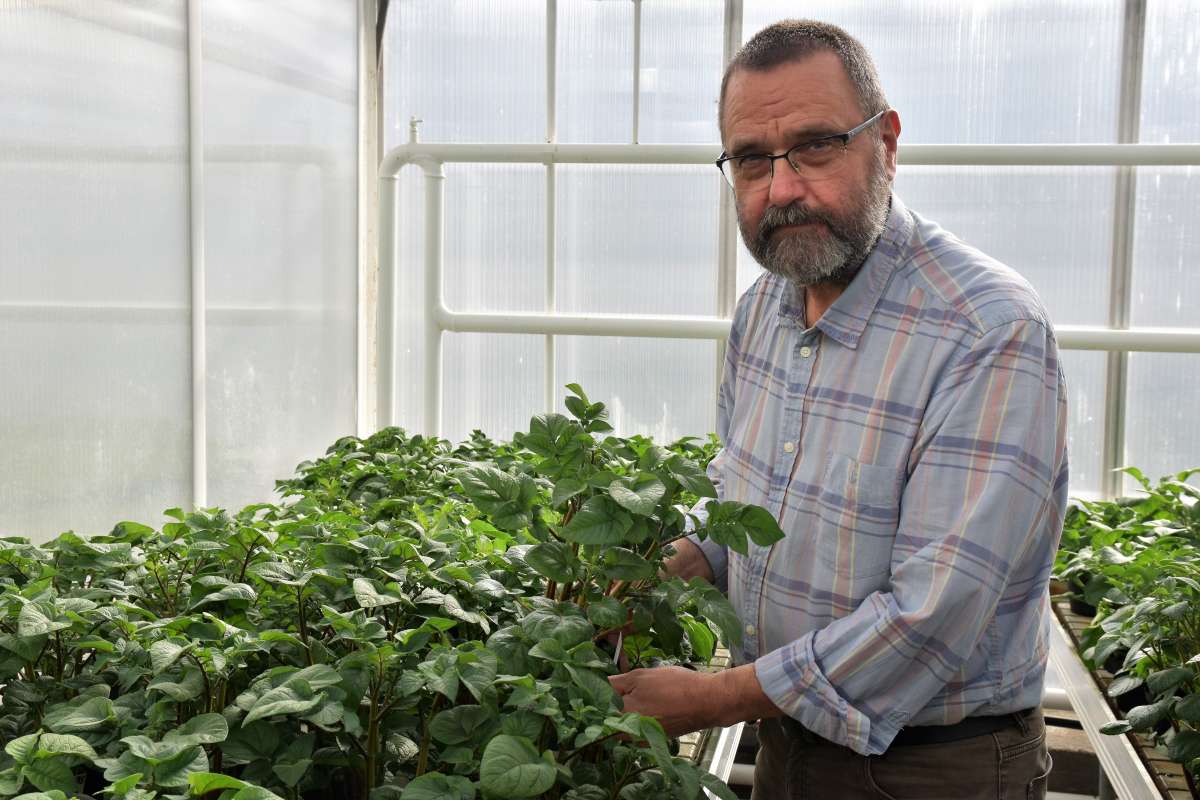Stepping up the fight against the world 's most important potato disease
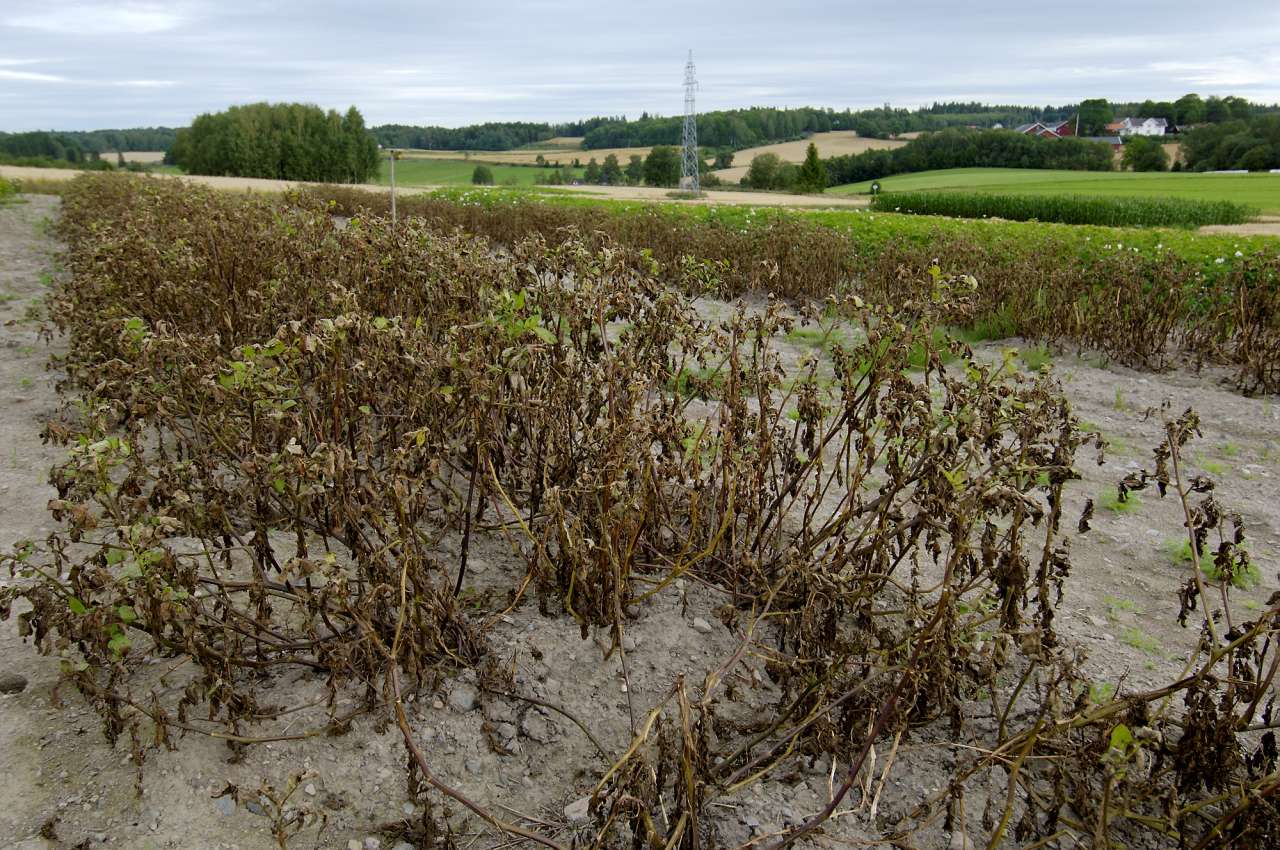
Late blight is the most important potato disease in Norway and worldwide. In a short time, the disease can kill the potato plants and cause significant losses in yield and quality. Photo: Erling Fløistad
Late blight is the most important disease in potatoes, and combating it requires large amounts of chemical pesticides. There is a need for new methods to keep potatoes healthy.
Potato late blight, caused by the fungus-like organism Phytophthora infestans, has plagued potato farmers in Europe for nearly 200 years. It is the most important potato disease worldwide. Under humid conditions, the disease can kill potato plants within a couple of weeks and degrade the quality of the potatoes. In this way, late blight can cause significant crop losses both in quantity and quality.
Increased use of fungicides
In the fight against late blight, large amounts of chemical pesticides are used. In fact, products used against the disease account for about half of all fungicides used in Norwegian agriculture. In recent years, the use has been particularly high.
“The autumn of 2023 was extremely wet in Norway. This provided favourable conditions for the development of late blight, which lead to large amounts of fungicides being used”, senior research scientist Arne Hermansen at NIBIO explains. Hermansen has worked with potato late blight for more than 30 years and sees a worrying trend.
“Since I started working with late blight, the number of sprayings against the disease has nearly doubled. Potatoes are a very important crop both in Norway and worldwide. Therefore, we must work to make potato cultivation more environmentally friendly. We need to step up the fight against late blight!”
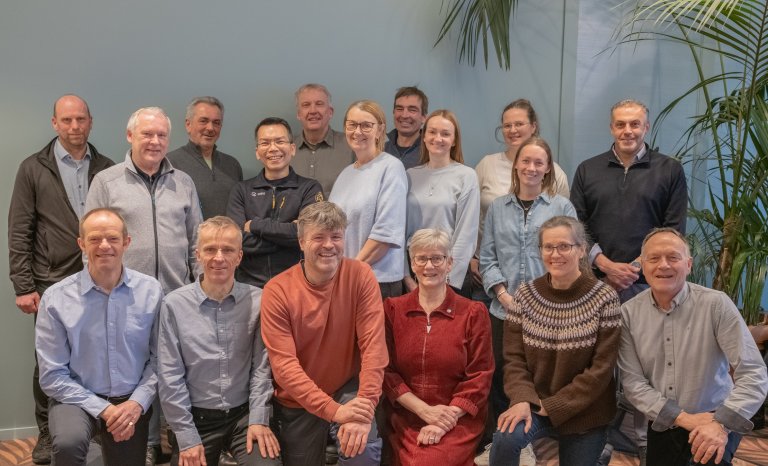
A toolbox of preventative methods
Hermansen leads the newly started project NoBlight. In this project, researchers will work to manage late blight with less use of traditional pesticides.
“There will probably never be a single method to manage late blight. We have a toolbox with various measures against the disease, but it needs to be expanded with new methods”, says Hermansen.
“A very important measure is to develop potato varieties that are resistant to the disease, but this takes time. Late blight continues to evolve and can overcome the resistance in potato varieties. Therefore, it is important that we have several methods to play with”, he elaborates.
“With more alternatives available, we can also use products that are less effective than traditional chemical products and have a lower environmental risk. Such products can work well on potato varieties with increased resistance to late blight.
However, preventative measures alone are not enough – they must be used at the right time. Therefore, it is important to have good warning services.
“Today, there are two warning services for use against late blight”, says Håvard Eikemo, another research scientist at NIBIO.
“We want to improve the warning for when to perform the first spraying against late blight.”
Eikemo explains that this warning does not always come in time. The farmer risks spraying too late, allowing late blight to establish in the field early in the season.
“If you are too late with the first spraying, the disease becomes even more challenging to manage.”
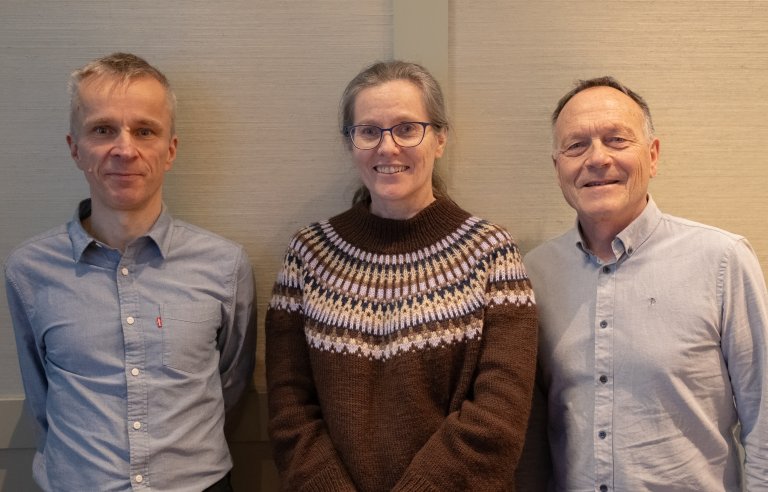
Innovative plant protection
In NoBlight, researchers will also investigate a completely new method for managing late blight. The method is based on detailed genetic knowledge of the late blight organism.
“We have recently been involved in developing a method to investigate so-called effector genes in late blight”, research professor May Bente Brurberg explains.
“Effector genes play an important role in how late blight can infect the plant."
“If we can prevent these genes from being expressed as proteins, we can prevent late blight from infecting the plant”, Brurberg further explains.
This is done by designing short double-stranded RNA molecules that match specific effector genes. The RNA molecules are sprayed on the plant and taken up by the cells of the late blight when it arrives to infect the plant. The RNA molecule prevents the production of protein from the effector gene.
“If we can get this to work on a larger scale in the field, we hope to drastically reduce the need for traditional chemical pesticides”, says Brurberg.
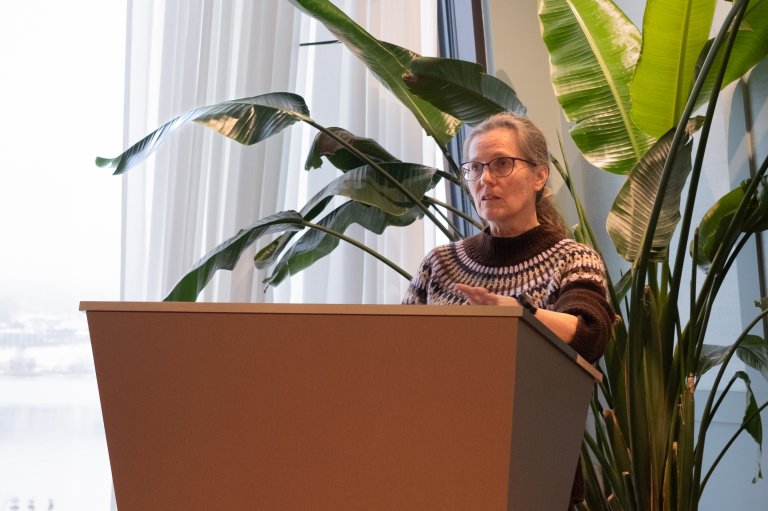
Optimistic for the future
Despite the name "no blight", Hermansen is clear that late blight will never be exterminated. The disease will always be a challenge for potato farmers. Nevertheless, he believes that the project will bear fruit.
“The work to manage late blight is a long-term effort that will not be finished as long as late blight exists. But if we can update the toolbox with various measures, I believe we will be able to manage late blight with less use of chemical products," he says.
“We have an ambitious goal to halve the use of pesticides in ten years!"
Contacts

NoBlight
The NoBlight project aims to reduce the use of chemical plant protection products in potatoes, making potato cultivation more sustainable. The project is funded by "Research Funds for Agriculture and Food Industry." Parts of the potato industry (Graminor, Bama, Gartnerhallen, Hoff, Findus, Maarud) participate with funding and contributions. NLR (the extension service for Norwegian farmer) is also involved in the project. The project is led by Arne Hermansen at NIBIO and has several European partners.
Late blight
The potato was introduced to Norway around the 1750s. About 100 years later, in 1845, potato late blight followed. Since then, potato farmers in Norway have struggled with this disease, which is the most important potato disease both in Norway and worldwide. In Norway, there has been a warning service for late blight since the late 1950s. The pathogen survives in infected potatoes but can also survive for several years as resting spores in the soil. It thrives in warm and humid weather and infects leaves, stems, and tubers. In infected tubers, the rot continues to develop in storage.
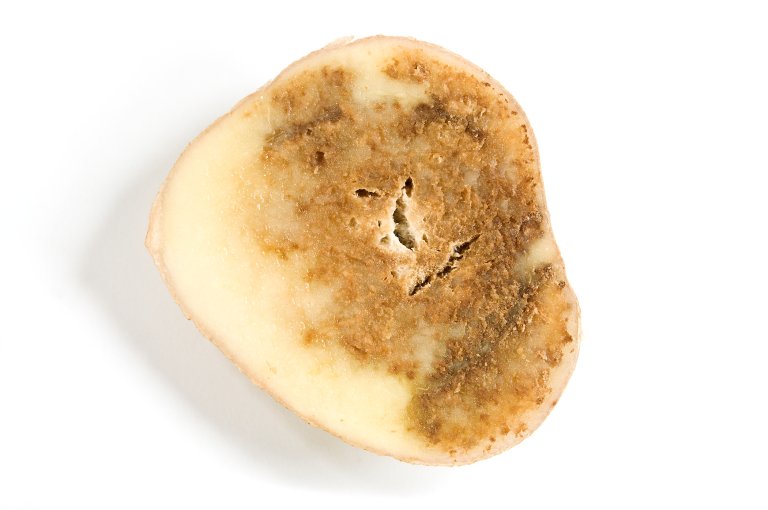
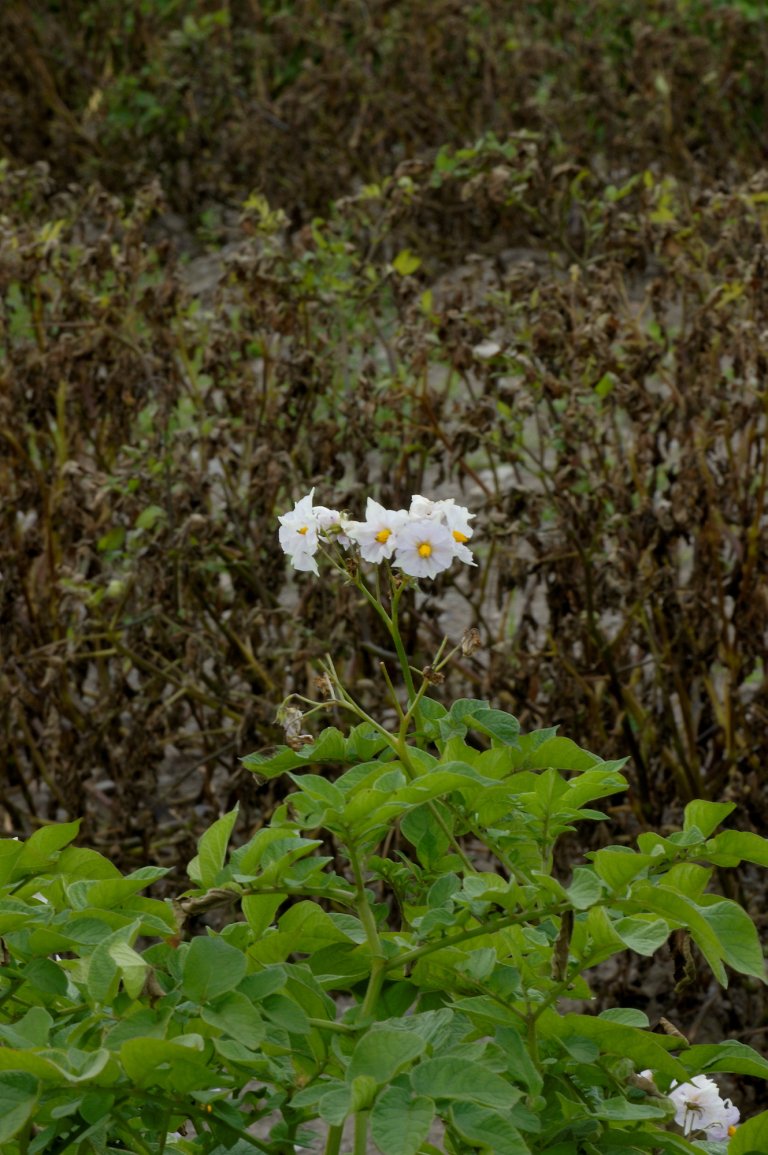
Contacts


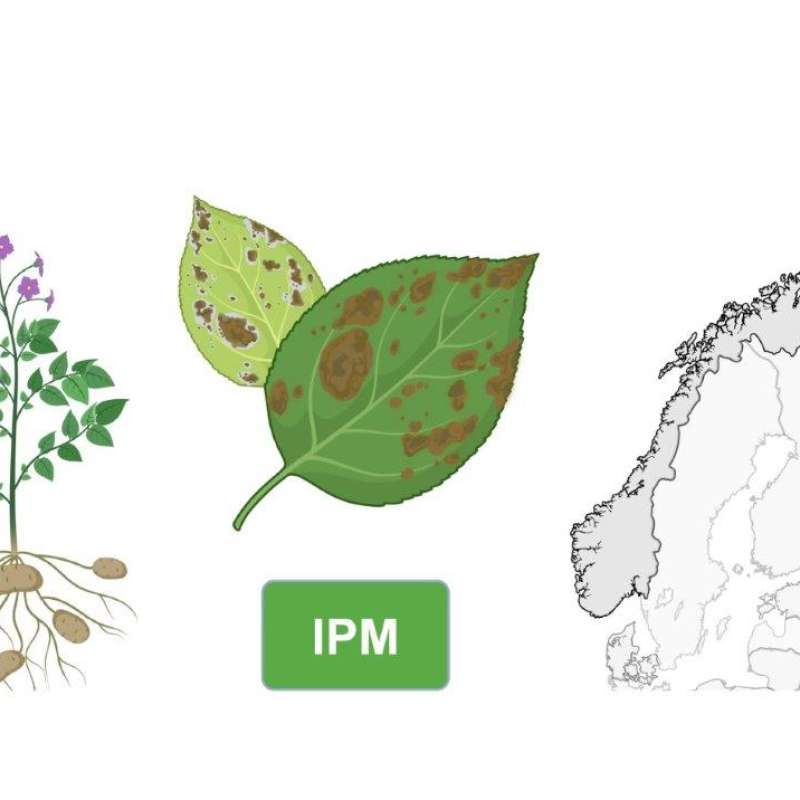
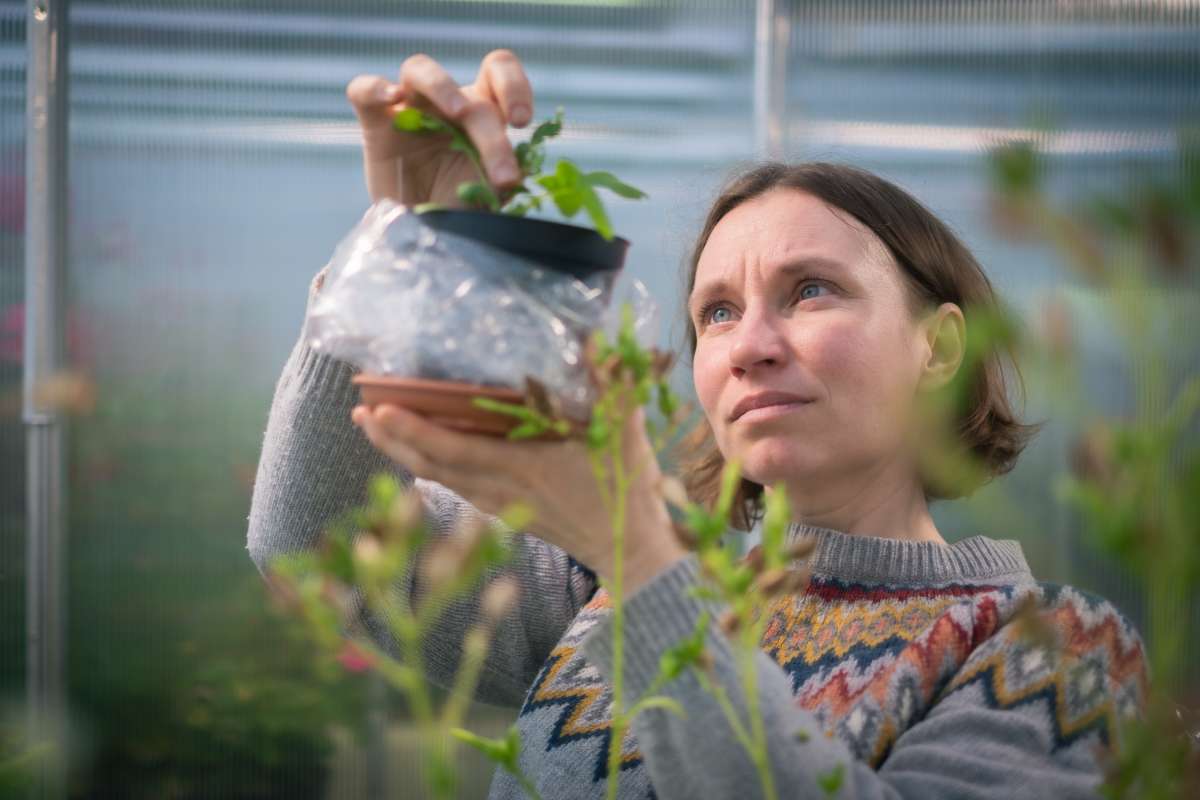
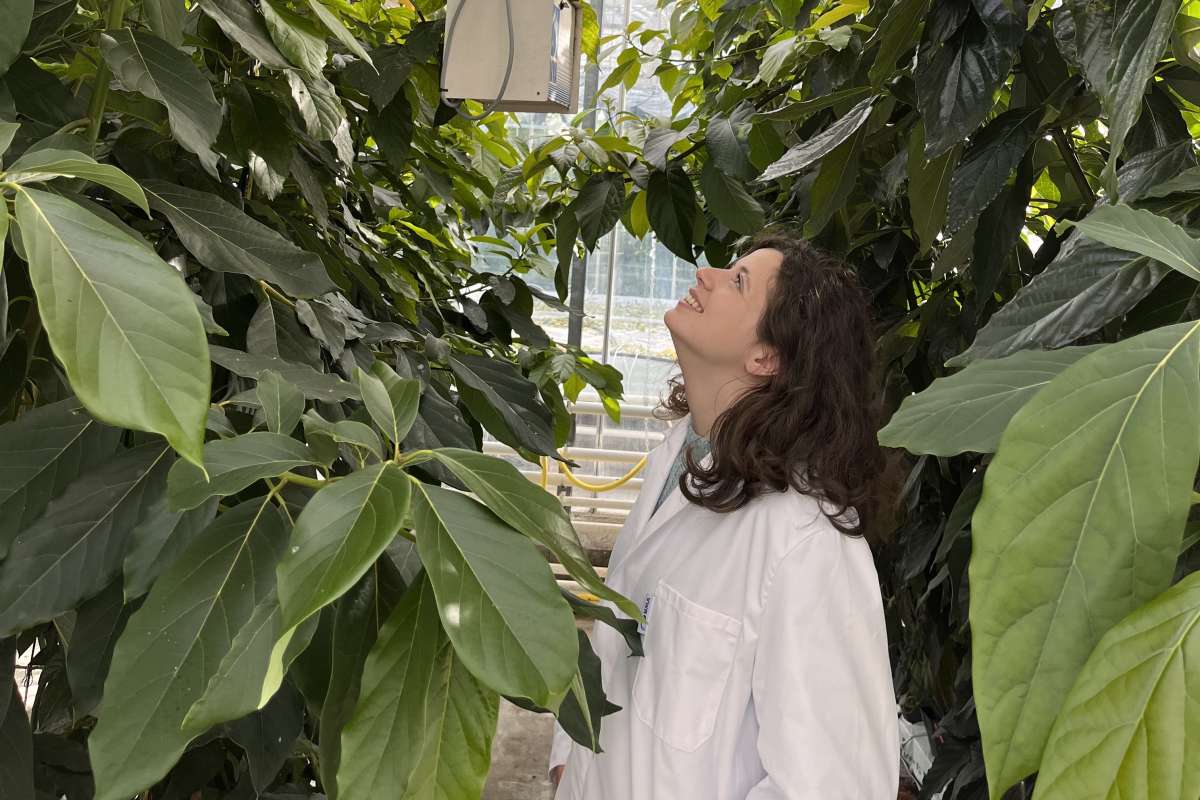
.jpg?quality=60)
